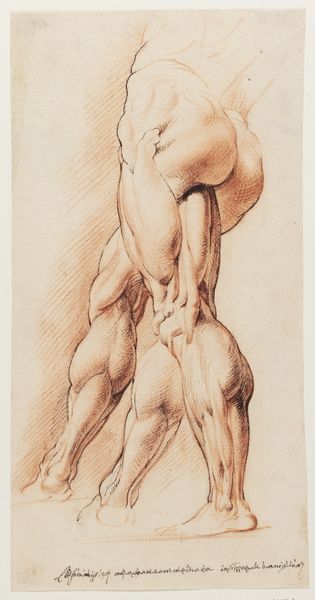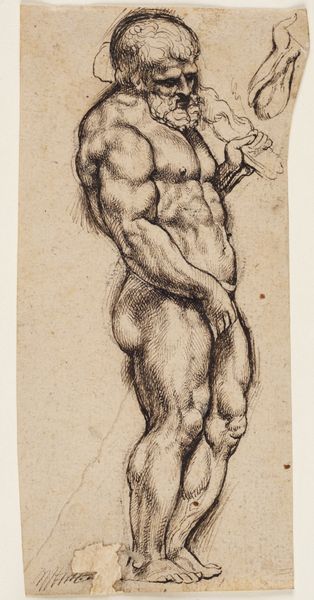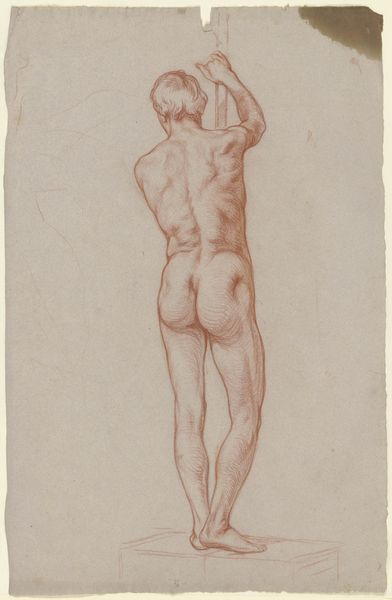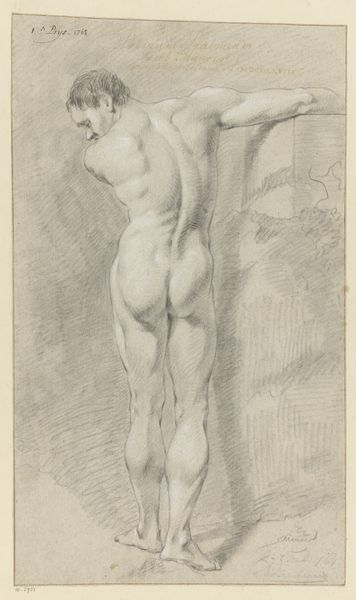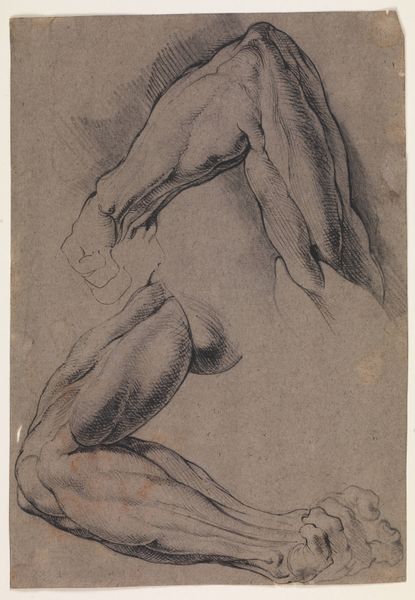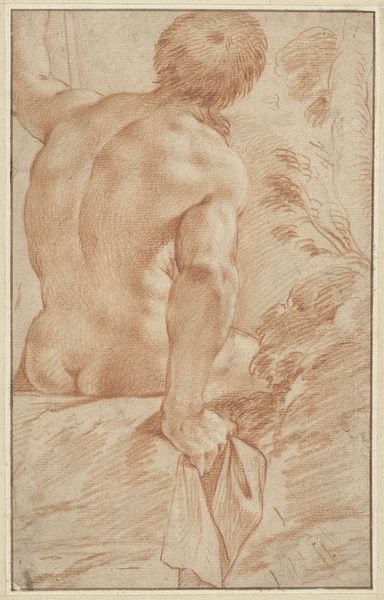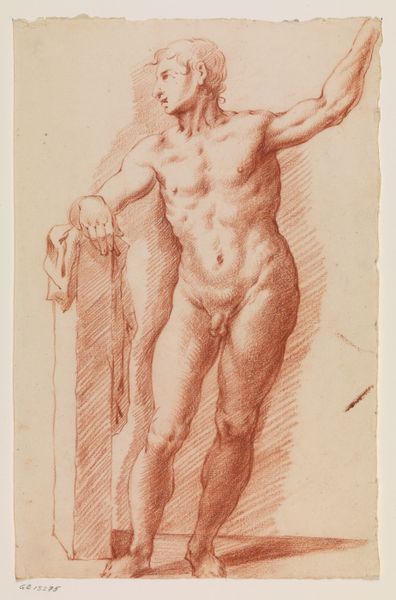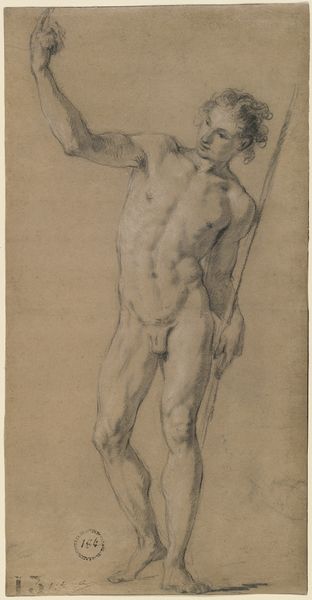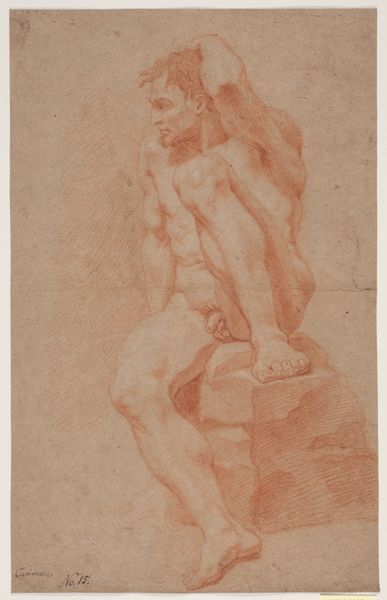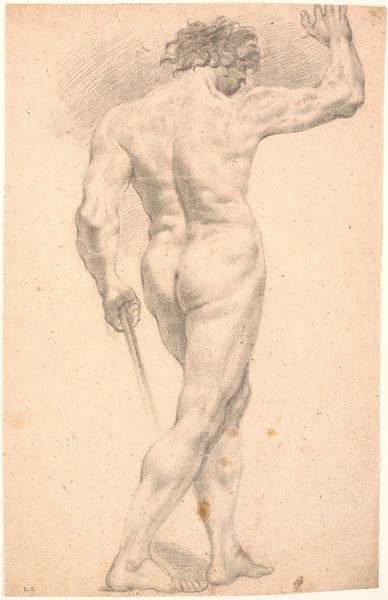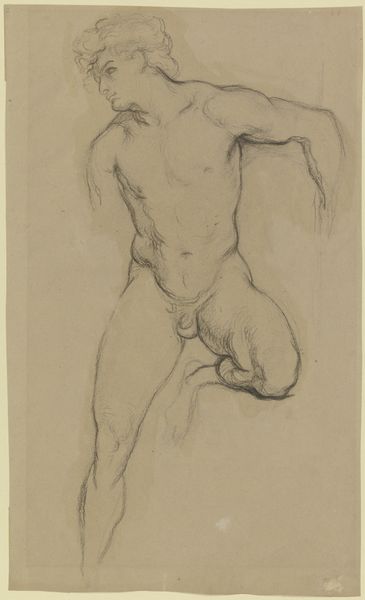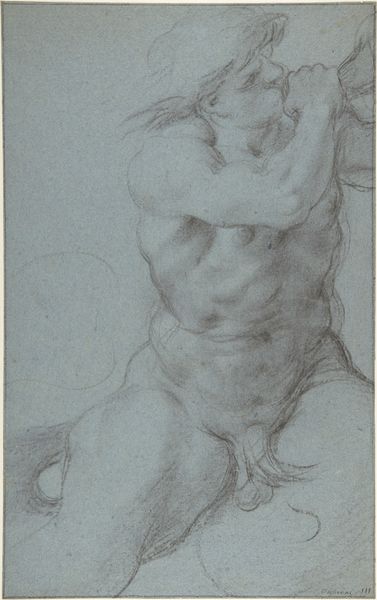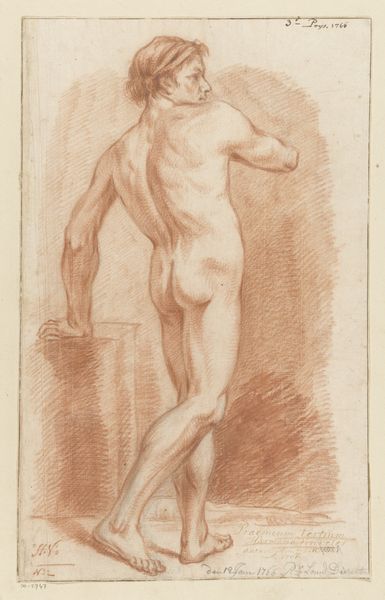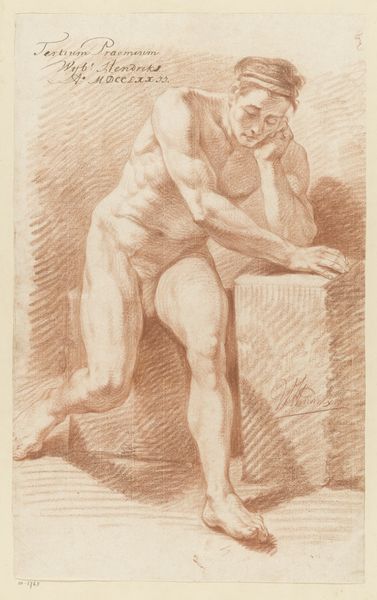
drawing, red-chalk
#
portrait
#
drawing
#
baroque
#
red-chalk
#
charcoal drawing
#
15_18th-century
#
portrait drawing
Copyright: Public Domain
Editor: Here we have Gaspare Diziani's "Farnese Hercules," a red chalk drawing. It really captures a sense of raw, powerful masculinity. What strikes you most about it? Curator: The figure’s back, its muscularity, speaks to a classical ideal of strength. But it's a complicated ideal, right? Hercules, this ultimate hero, also performed labor. Consider the original sculpture this drawing likely references: how might the display of hyper-masculinity be connected to 18th-century European power structures and ideas about labor and subjugation? Editor: So, you’re suggesting that even representations of heroism can be tied to broader social and political power dynamics? Curator: Absolutely. The choice to depict Hercules, specifically in the pose of the weary, burdened hero, is telling. Think about how that image resonates—or perhaps clashes—with the realities of the working class at that time. How does celebrating mythical strength potentially normalize or even glorify the exploitation of actual human labor? Does seeing him from behind somehow hide the burden or internal thoughts that he is thinking about? Editor: It’s almost like the image reinforces a kind of ‘natural’ order, where some are destined for heroic labor, and others are...not. Curator: Exactly! And how might we connect that to colonial ideologies, where certain bodies were deemed inherently suited for physical work, for serving the empire? Editor: This gives me a totally new way of approaching historical art; I’m definitely seeing so many layers I hadn’t noticed before. Curator: Me too; by engaging in this type of intersectional critique, it encourages us to ask far more thoughtful questions regarding power and representation.
Comments
No comments
Be the first to comment and join the conversation on the ultimate creative platform.
